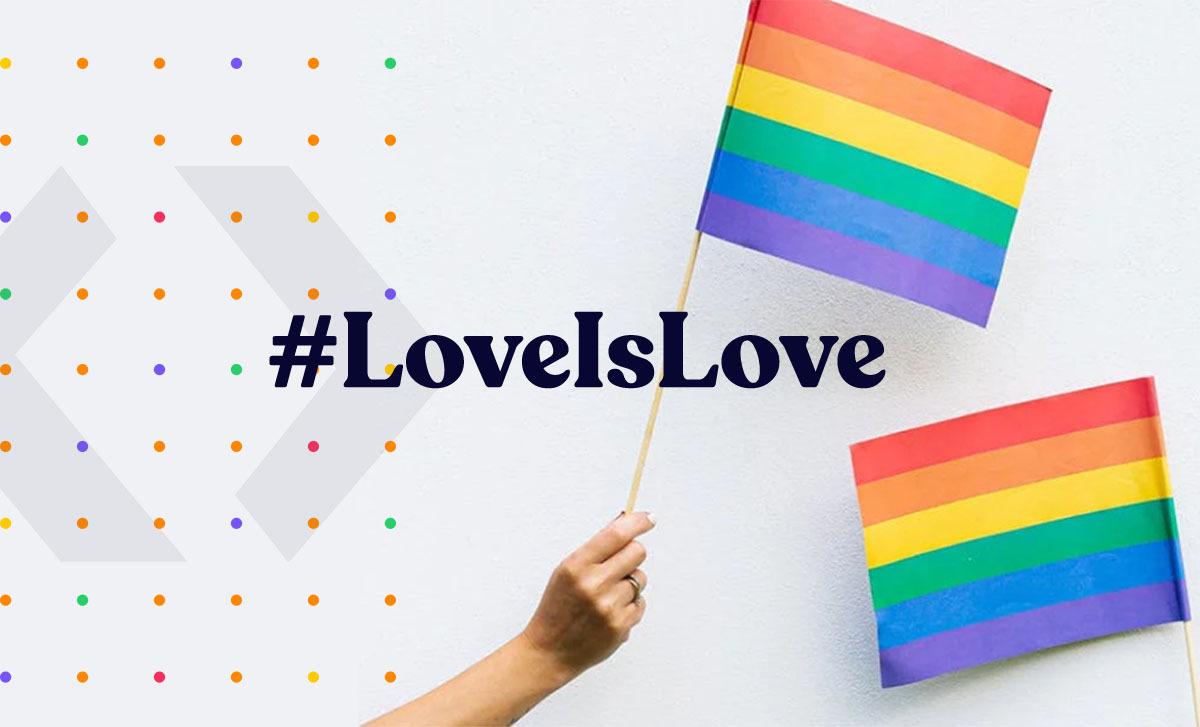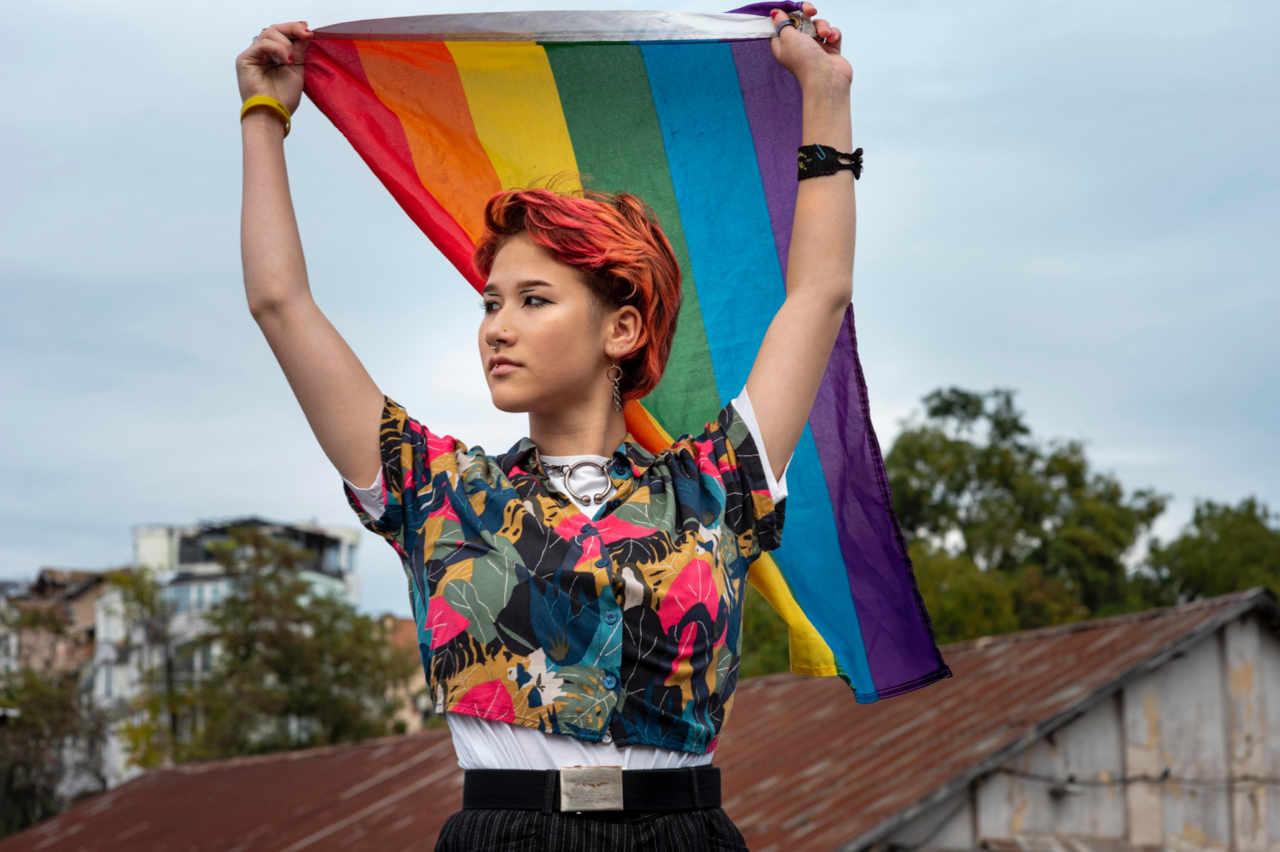
Listen to the article
Your audio file will ready in a few seconds...
TL;DR: Part of our calendar activities this Pride Month involved two webinars on being an ally in the workplace and how to use pronouns to respect and recognize people’s gender identity. In this blog, we’ll briefly cover what we discussed in both spaces.
One of the most important questions that have arisen throughout our conversations prior to and throughout Pride Month has been how to offer support to members of the LGBTQIA+ community. Support comes in the form of allyship, yet not in the sense many of us grew up knowing. Rather than an alliance formed during times of conflict, an ally in this present scenario is someone who stands for an underrepresented group.
This sort of allyship doesn’t occur organically — or easily. It’s an exercise of empathy that requires a thorough understanding of the experiences of other communities. In Change Catalyst’s State of Allyship Report, an ally “takes action by stepping up and stepping in as an advocate — even sometimes stepping back — so that our colleagues can thrive. An ally also leads to change by correcting unfairness and injustice by removing barriers so everyone can rise”.
The key to allyship is taking action. And often, these actions aren’t overly sophisticated. In the workplace, being an ally for the LGBTQIA+ community can mean asking a person for their pronouns or speaking up whenever they are being talked over.
Notes on privilege
In Privilege: A Reader, Michael Kimmel visualizes this concept as a strong headwind. People who run with the wind on their back feel almost like sailing effortlessly, without expending no energy at all. It’s only when you turn back and walk against the headwind that you realize how difficult it is to make progress. As Kimmel notes, “being white, or male or heterosexual in this culture is like running with the wind at your back.” Privilege refers to all those social benefits that grant members of specific groups advantages that others lack.
Again, it’s the wind blowing in their favor.
Privilege itself is a concept with many layers and nuances. Scholars define it as a special advantage that’s granted —not earned— through effort or talent. People from a certain rank feel they’re entitled to certain experiences or events in life for the sake of their rank alone. Exercising such privilege comes at the expense of others, either directly or indirectly excluding people from the same opportunities and experiences.
The person receiving such privileges is typically unaware of how their race, gender, sexual orientation, age, socioeconomic status, religion, and even their body play an important role in attaining certain milestones. Therefore, acknowledging a privilege can definitely be unpleasant, and come with a certain degree of guilt or defensiveness. Some people may even question what systematic discrimination has to do with them, on a personal level.
Though privilege can be uncomfortable, it’s not an idea people can simply disregard to move forward. Being aware of one’s privilege is the stepping stone for many relevant changes. For starters, it helps break a cycle of inequality prompted by limited access to platforms and opportunities.
What does being an ally in the workplace mean?
For those already wondering what kind of support an ally can provide a member of the LGBTQIA+ community, we’ve jotted down a list of key actions and tactics to be a better ally. The idea is to slowly incorporate them, at your own pace.
Learning on your own
Although there’s a lack of knowledge regarding LGBTQIA+ discrimination, it’s best not to turn to your queer colleagues to explain these concepts. Doing so can trigger traumatic memories and events. Unless they’re open to discussing these topics, doing your own research and learning what has been done before is a better way of understanding the movement.
Listening to others
As an ally, one of the best things you can do is listen and learn. Practicing allyship is an act of empathy that requires you to listen carefully to the stories and experiences of people in the community. Be attentive and offer support when appropriate. In Guidelines for Being Strong White Allies, Paul Kivel notes that people of color consider listening as one of the most important actions an ally can do.
In the case of LGBTQIA+ communities, these guidelines are equally applicable. With listening comes an understanding of what intersectionality means. Listening carefully to experiences helps allies understand how the different systems of oppression overlap and affect the most marginalized.
Getting uncomfortable
Part of becoming an ally is voluntarily giving up the comfort that comes at the expense of others. Many people struggle with eliminating many phrases and attitudes that seemed innocent but had queerphobic undertones. And humans are often resistant to change.
The idea behind getting uncomfortable is challenging the status quo, understanding that your discomfort helps stop a harmful cycle.
Being an ally in the workplace means learning from your mistakes
The idea behind getting uncomfortable is to be aware that you are bound to mess up, at some point. When this happens, don’t over-apologize! Just acknowledge your mistakes and move forward. Learning from your failures is also an important pillar of your allyship.
Knowing this isn’t about you
Allyship encourages people to use their privileges and platforms to promote discriminated voices. However, be aware of your motivations. Social movements aren’t centered on a single person. Being a true ally implies giving others the spotlight, and encouraging them to speak up.
In allyship, language is a barrier
Allies for the LGBTQIA+ community understand that language generates meaning and identity. Using feminine pronouns, for instance, comes with a series of social preconceptions of how women should look, dress, and act. Yet, what happens if people don’t identify with how they look or the pronouns they use?
In this case, an act of allyship is to use language as a way of generating new meaning and undermining the idea that gender is a static concept. Because speaking matters, an important act of allyship is asking people what their pronouns are. Whether you agree or disagree, the use of pronouns and names for people who have expressed their preference is a matter of being respectful of their experience, their battle, choices, and how they like being named.
How to ask the question | |
| What are your pronouns? | What pronouns do you use? |
| How do you identify? | What would you like me to call you? |
Wondering how you ask your coworkers for their pronouns? Here are a couple of guiding questions.
Using language as a way of supporting members of queer communities is a process that takes time and effort. If you ever mess up and misgender one of your coworkers, don’t sweat it. The best you can do is learn from your mistakes and move on, making sure you’ll be more aware of what to say next time. What matters most is that you’re using language as a way of breaking the cycle.
If you’re looking for more information, watch our webinar recording about the use of pronouns and how to implement them in the workplace.
Was this article insightful? Then don’t forget to look at other blog posts and follow us on LinkedIn, Twitter, Facebook, and Instagram.










